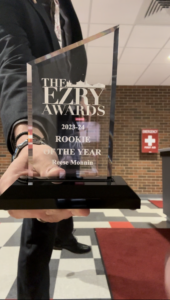Synesthesia is defined as the production of a sense impression relating to one sense or part of the body by stimulation of another part of the body. The most common form of synesthesia is called grapheme, where your brain associates colors with numbers and letters. The pairings are often very random and are solely based on a gut feeling, but are something that the subject knows to be true.
I recently came to realize that one of my sorority sisters has this unique condition. Long story short, a bunch of us in my sorority spent at least half an hour giving Grace Worley, ‘20, random numbers and letters to see what color she associated with them.
I quickly noticed a pattern, all the numbers beginning with a one were white, no matter how big or small the number. For example, one is white and so is 1,674 is also white. The same goes for the number four corresponding with pink. Four is pink and so is 440,867.
Interestingly enough, it doesn’t always work the other way around for Worley. You can give her a number and she can tell you the corresponding color right away. But, if you ask her what number a specific color is, the best she can do is guess based off of what colors she knows other numbers correspond with.
Worley also mentioned that some letters are also gendered and have specific colors. A is always a boy and B is always a girl. This same kind of effect also applies to data analysis/psychology world. The number zero on a graph or set of numbers always represents a male and one is a female.
Of course, my psychology-oriented mind was immediately interested in Worley’s condition and wanted to know how she came to realize that she had this ability. Apparently, she knew of her ability just as randomly as how the mental pairing seems to work. To begin, someone said the number six and she just had a gut feeling and knew, that lovely number was plum colored.
Somehow, Worley’s brain decides to connect two totally different kinds of stimuli by random association. Some may think that something like this is just something that Worley makes up on the spot, but she’s known that these colors correlate with these specific numbers for years now.
Synesthesia used to be a condition that was thought to be very rare, but recent research showed that it’s actually fairly common. Nearly 4 percent of the population has synesthesia naturally and people often experience similar symptoms when using psychedelic drugs.
Knowing Worley, an art major extraordinaire, this kind of condition is perfect for her future career as an art educator.







